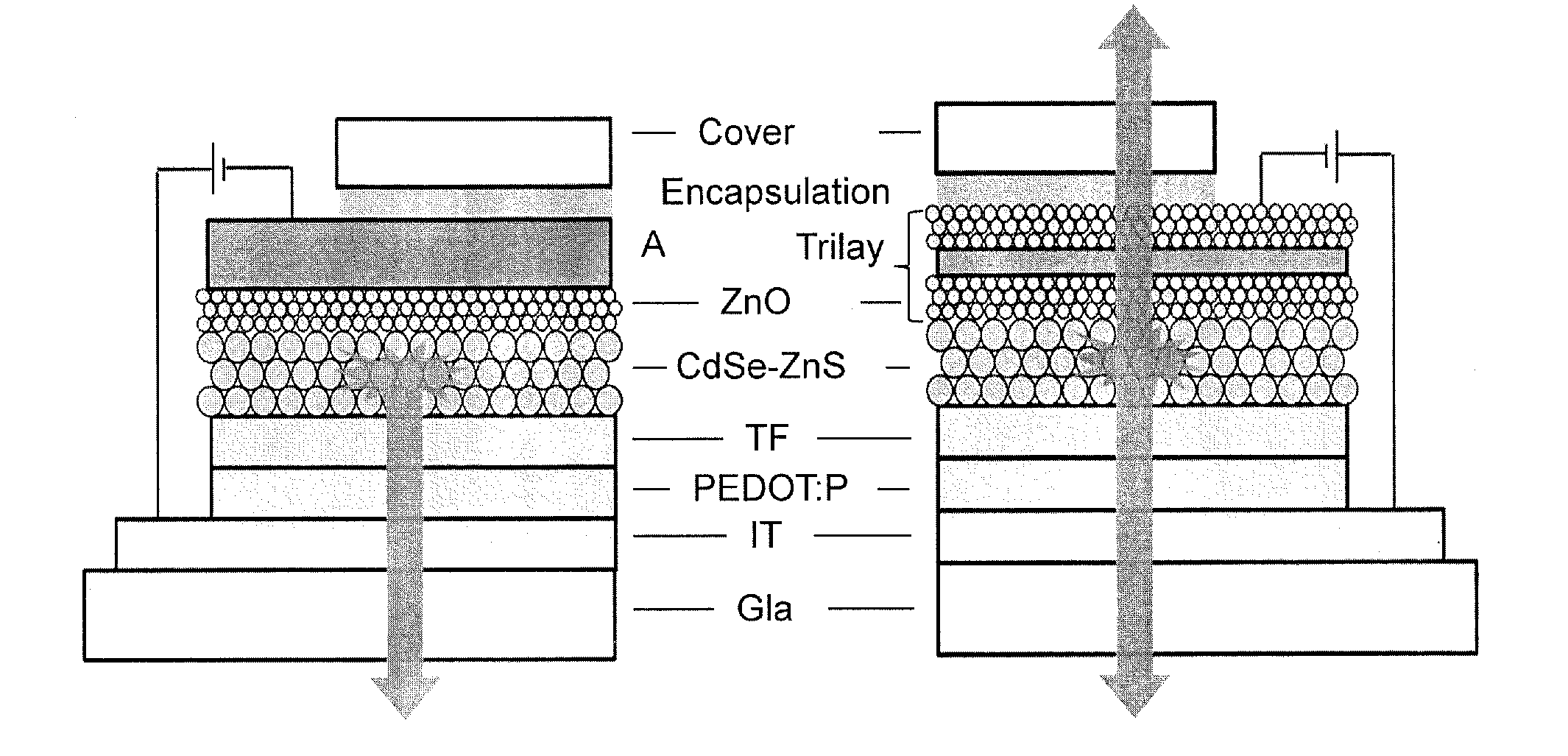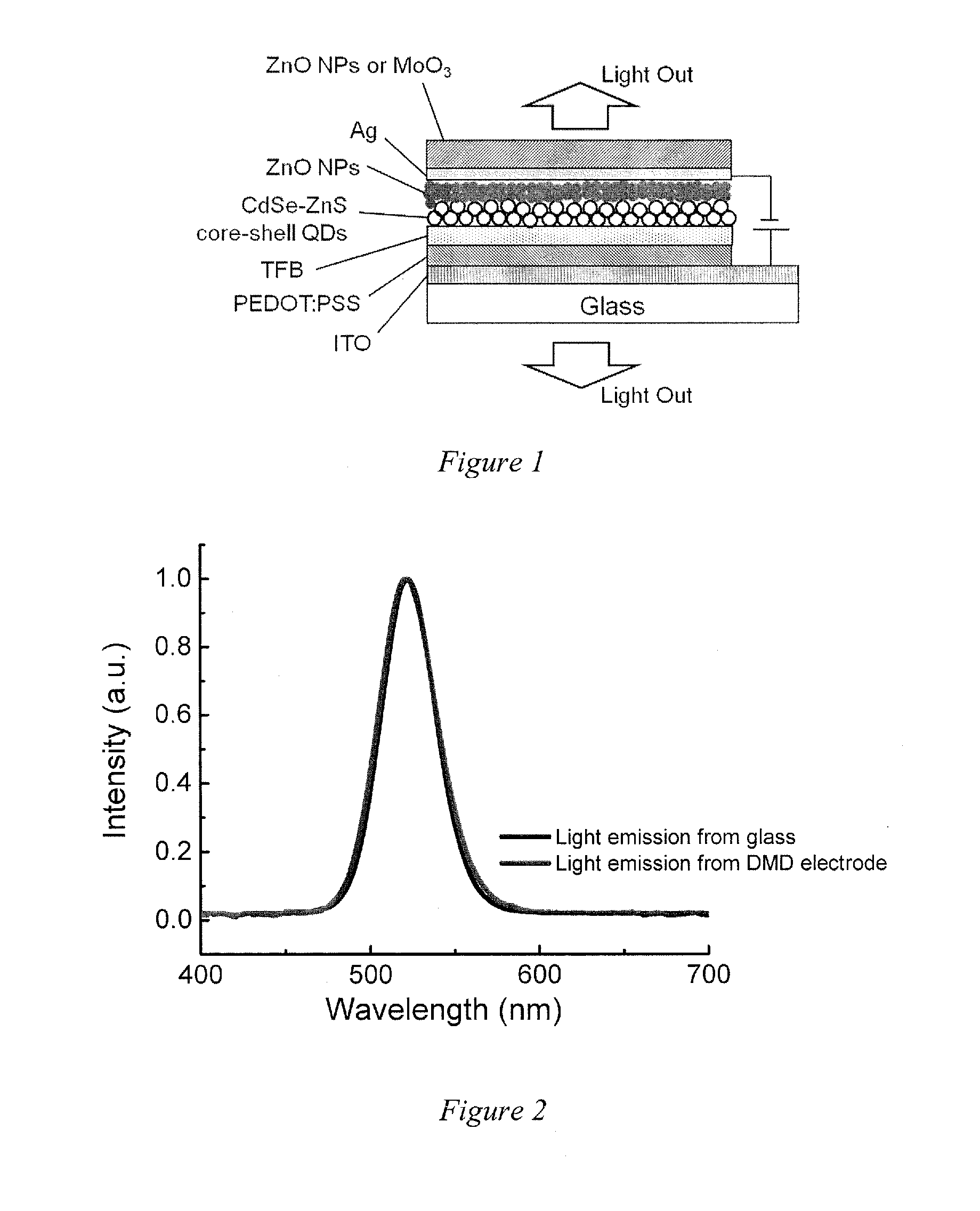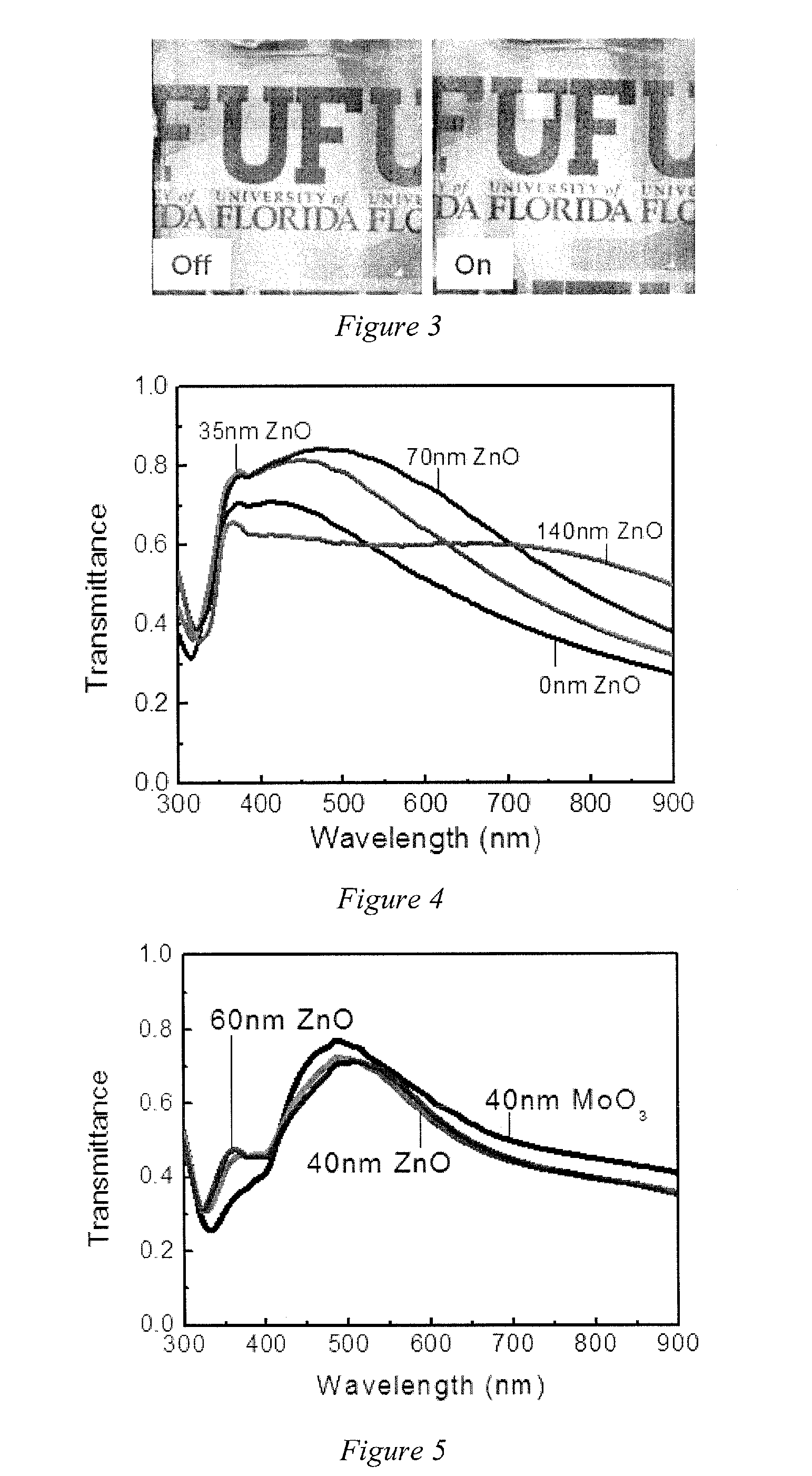Transparent quantum dot light-emitting diodes with dielectric/metal/dielectric electrode
a diode and quantum dot technology, applied in the direction of electroluminescent light sources, chemistry apparatus and processes, and compositions of light sources, can solve the problems of high fabrication cost, high cost of leds, and high current and heat management requirements, and achieve low sheet resistance and sufficient transparency
- Summary
- Abstract
- Description
- Claims
- Application Information
AI Technical Summary
Benefits of technology
Problems solved by technology
Method used
Image
Examples
Embodiment Construction
[0033]Embodiments of the invention are directed to transparent QD-LEDs that incorporate an electrode consisting of a layer of dielectric, a thin metal layer and an additional layer of dielectric, a DMD structure. Transparent QD-LEDs can be integrated with transparent display systems, owing to the high optical transparency of the thin QDs and carrier transport layers. Transparent QD-LEDs can be fabricated on the transparent windows of cars, airplanes and other facilities as the “head-up displays”. Transparent QD-LED panels can be integrated with house windows as innovative light systems, acting as normal windows during the daytime but transitioning to light sources after sunset. Transparent laptop and other such devices can be developed using these transparent QD-LEDs. The QD-LED employs the electrode with an dielectric / metal / dielectric (DMD) structure having an inner dielectric layer that serves the function of the charge transport and injection layer, whereas a thin metal layer, wi...
PUM
| Property | Measurement | Unit |
|---|---|---|
| thickness | aaaaa | aaaaa |
| thickness | aaaaa | aaaaa |
| thickness | aaaaa | aaaaa |
Abstract
Description
Claims
Application Information
 Login to View More
Login to View More - R&D
- Intellectual Property
- Life Sciences
- Materials
- Tech Scout
- Unparalleled Data Quality
- Higher Quality Content
- 60% Fewer Hallucinations
Browse by: Latest US Patents, China's latest patents, Technical Efficacy Thesaurus, Application Domain, Technology Topic, Popular Technical Reports.
© 2025 PatSnap. All rights reserved.Legal|Privacy policy|Modern Slavery Act Transparency Statement|Sitemap|About US| Contact US: help@patsnap.com



